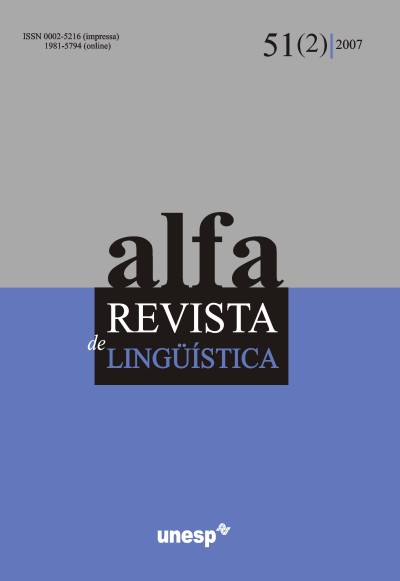The dynamic implementation of non-overt arguments in nominalizations
Keywords:
Nominalization, Embedded Constructions, Valency, Overt Argument, Non-Overt Argument,Abstract
Valency is an inherent property of nominalizations representing higher-order entities, and as such it should be included in their underlying representation. On the basis of this assumption, I postulate that cases of non-overt arguments, which are very common in Brazilian Portuguese and in many other languages of the world, should be considered a special type of valency realization. This paper aims to give empirical support to this postulate by showing that non-overt arguments are both semantically and pragmatically motivated. The semantic and pragmatic motivations for non-overt arguments may be accounted for by the dynamic implementation of the FDG model. I argue that the way valency is realized by means of non-overt arguments suggests a strong parallelism between nominalizations and other types of non-finite embedded constructions – like infinitival and participial ones. By providing empirical evidence for this parallelism I arrive at the conclusion that there are at least three kinds of non-finite embedded constructions, rather than only two, as suggested by Dik (1997).
Downloads
Downloads
Published
How to Cite
Issue
Section
License
Manuscripts accepted for publication and published are property of Alfa: Revista de Linguística. It is forbidden the full or partial submission of the manuscript to any other journal. Authors are solely responsible for the article's content. Translation into another language without written permission from the Editor advised by the Editorial Board is prohibited.

